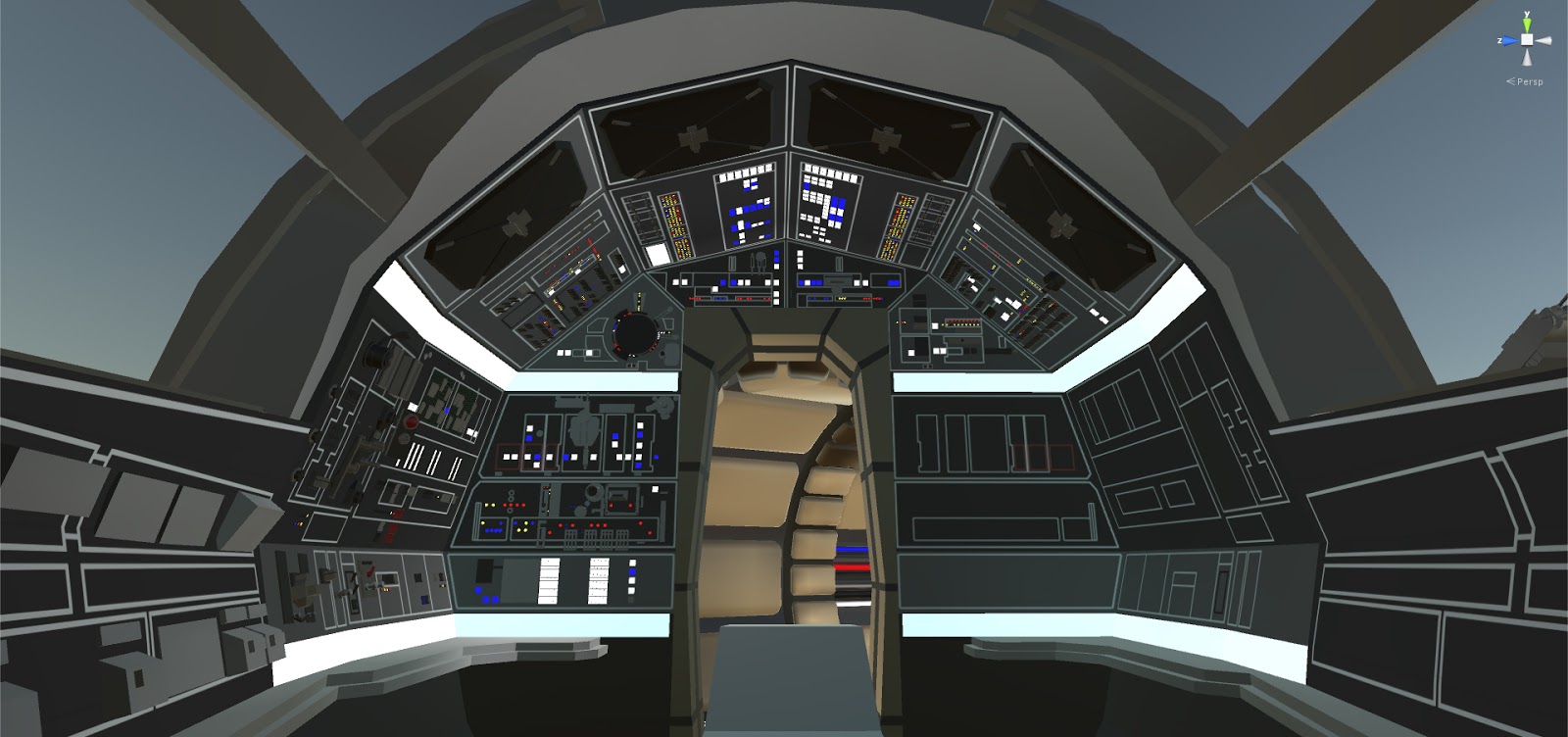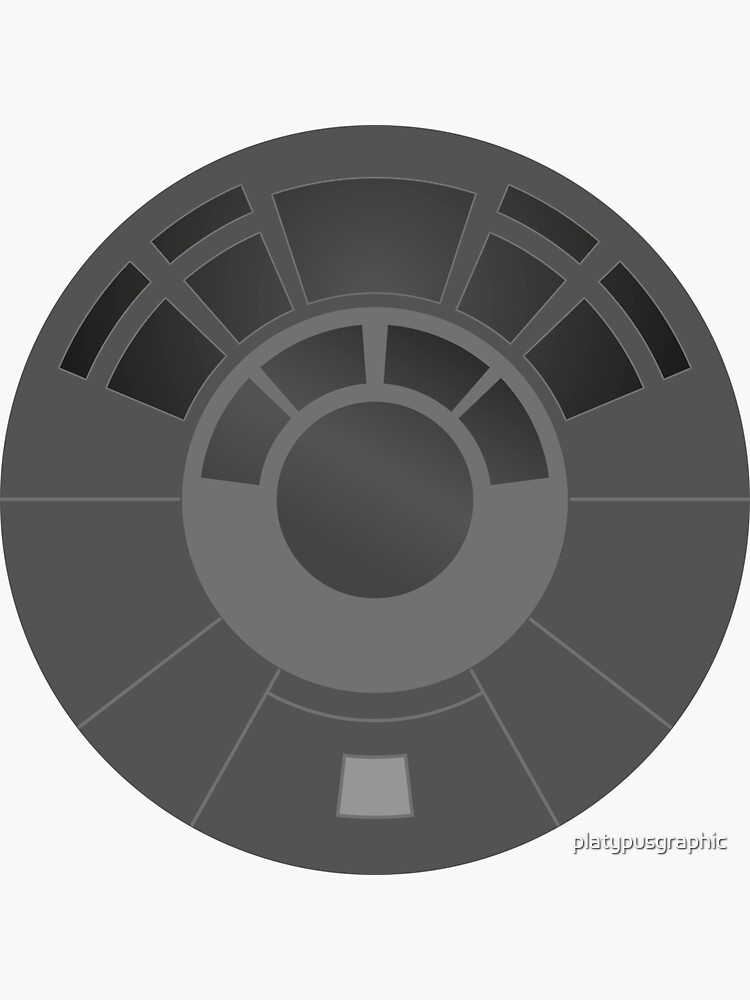

To make this work, I stacked a piece of welding mask plastic on top of some transparency paper that I had printed the design onto. The challenge was to make the interface completely disappear when the light is off. I used a switch of his choice to toggle on and off the map-looking interface. He suggested that one of all the switches in the mass of switches on the console should do something. One of my favorite details of our Millennium Falcon dashboard was inspired by my oldest twin. It ended up being a quick and easy way to add a ton of detail.
Millennium falcon cockpit vector image install#
Initially, I thought I was going to need to install rows of switches, but I eventually decided to go with a screen accurate look by designing the parts and printing them out on the 3d printer. Then I placed momentary switches in different areas on the console and tied each to a different sound (explosions, guns, takeoff, and the Falcon theme music).īut my favorite part was using a capacitor to trigger a sound when flipping on the lights. I powered this and an old computer speaker system (with a subwoofer – everything fit nicely inside the console) with the same switch going to the lights. Though only half the details were done at this point, the lighting is already giving the console a very finished look.Īt this point, my kids began clamoring for me to get some buttons and sounds installed, so I once again scavenged our broken playhouse project for our Adafruit Audio FX board. Honestly, I was nearly giddy with excitement when I got the panels reassembled and plugged in the lights for the first time. For the small lights, I drilled small holes and filled the top with a small cylinder of transparent 3d printing. Fortunately, the dye worked perfectly.įor illumination, I decided to go the simplest and easiest route – using strings of Christmas lights secured with hot glue. Since I needed many of the squares tiles to be blue, I used fabric dye and followed the instructions on the package with hope that they’d turn out well. I made a custom order from Delvie’s Plastics and got great customer service and a quick turnaround on the parts. The solution, 1/8″ thick #2447 acrylic laser cut into 1″x1″ squares.


With the previous playhouses I had built for my kids, I had just used square pieces of plastic or wood, but now I needed something that would both look crisp and also disperse light well. The white and blue illuminated buttons are the primary visual element on the dashboard. I know it sounds janky, but it worked, at least for a temporary solution. My final solution was to 3d print the lenses in a translucent white filament and then color in the front of the lenses with a marker. Particularly challenging early on were the multiple large lights. Taking your time to keep the lines straight is a pain, but it looks amazing when it’s done. Pinstriping is a tedious but simple process. I’ve added all the initial 3D printed components here for you to download. Initially, I used silicone and resin to duplicate a few parts, but for the most part, this ended up being a waste of time, and I eventually went back to printing each piece. With just the dashboard, there are dozens of components that required my attention and many many hours of printing on my beloved CR-10. Particularly helpful at this point was the beautiful 360 degree view of the Force Awakens era Millennium Falcon cockpit on the Star Wars website.ĭon’t tell anyone, but designing in 3D is one of my favorite things to do, and for sure I had my work cut out for me. Next came the slow process of building out the many components seen in the Falcon. Scavenging our old broken Millennium Falcon playhouse of switches and wires, I started installing some of the switches in the area between the seats as well as beginning to apply the telltale pinstripe patterns. Next, I spray painted each of the panels and then attached them to the frame using sheetrock screws. They wanted a Millennium Falcon, not a biplane, and I had a hard time convincing them that we were headed in the right direction. Once the parts were all cut out, I taped them all together with masking tape and then built an internal frame using 2″x2″ boards.Īt this point, my kids were pretty confused. Since I don’t own a CNC, these had to be done the old fashioned way, measuring out each length and angle and then cutting them out of thin MDF board. From it, I was able to line up the top, front, and side views in my 3d modeling software, scale them to actual size, and then explode those pieces into the parts I needed to cut out. We started by finding reference material online.


 0 kommentar(er)
0 kommentar(er)
